Working group I (WG I): Satellite systems and operations
The CGMS Working Group I on Telecommunications was originally set off, together with the Working Group on Meteorological products, as part of the decisions taken in the CGMS-18 plenary meeting in Geneva (CH) in 1989. The rational of the decision was based on the need to provide an adequate forum for the different CGMS experts to focus the discussions on technical topics, as well as allowing the plenary meeting to reduce the increasing number of agenda items to cover during the plenary meetings.
WG I Co-chairs: Dohyeong Kim, KMA, and James Donnellon, NOAA
WG I Rapporteur: Karolina Nikolova, EUMETSAT, co-rapporteur: vacant
WGI task group structure

Scope of Working Group I
CGMS Working Group I provides a regular forum for CGMS agencies to address topics of interest in areas related to global coordination of satellite systems and telecommunication. The Working Group addresses these issues for existing operational systems and also for future ones and will aim at supporting CGMS in preparing for the future generation of meteorological satellite systems and to contribute to the consolidation and updates of interoperability and standardisation imposed by technological evolution.
Objectives of Working Group I
WG I has the following objectives:
- To provide a technical forum for CGMS agencies to address global issues and technical aspects of their satellite systems;
- To address areas of mutual interest and advice agencies on topics related to frequency coordination and management;
- To act as CGMS point of contact, at expert level, between CGMS and other groups and organisations in areas of frequency management (e.g. SFCG, ITU and ITU regional groups, and preparation status and topics for the WRC;
- To address technical and operational aspects of direct broadcast services (present and future) of mutual or global interest for the CGMS agencies;
- To promote standards and interoperability and operational procedures to the CGMS agencies for the benefit of the user community of their direct broadcast services and the associated regional retransmission services;
- To address technical and operational aspects of the Data Collection Systems at international level;
- To promote standards and interoperability and operational procedures to the CGMS agencies for the benefit of the user community of the DCS Regional (and international) systems;
- To optimise/harmonise and update the CGMS global specifications; and
- To address topics from the CGMS High Level Priority Plan within the scope of WG I.
Terms of Reference of Working Group I
Outcomes and future
Since the creation of WG I in 1989, telecommunications techniques have evolved rapidly. The main focus of WG I has always been to keep CGMS in line with the latest technological solutions that will operationally support the meteorological user community. In doing so, WG I has provided a forum of discussion for the definition and consolidation of the digital transmission formats already in use by the meteorological community (LRIT and HRIT both global and mission specific details). WG I has also provided a discussion forum for the different WMO programmes using the International (or even regional) Data Collection System (IDCS), like Tsunami Early Warning System, Aircraft to Satellite Data Relay (ASDAR) or Automated Shipboard Aerological Programme (ASAP). Similarly, WG I has allowed direct discussions between different CGMS members on the newer generation of Data Collection Platform (DCP) transmitters and receivers. Finally, as another example of the contributions of WG I to CGMS success, it has allowed a coordinated effort in the utilisation and sharing, by the different CGMS members, of the frequency bands allocated to the Meteorological Satellite Service and, where relevant, to the Earth Observation Service.
Considering the future, CGMS WG I on telecommunications is expected to continue its efforts in the areas already identified above, but also to support CGMS in preparing for the future generation of meteorological satellite systems and to contribute on the consolidation of interoperability and standardisation that the evolution of technology imposes.


